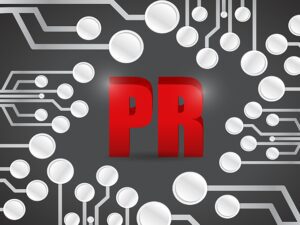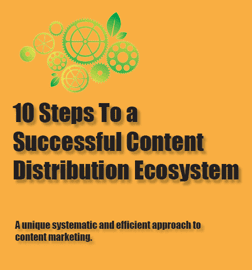Digital Public Relations: What It Is, and Isn’t

In this blog post and companion video tutorial, I’m going to talk about Public Relations. Now, if that introduction makes you want to leave this page, please hold off and continue reading. This is not your traditional PR pitch blog post – in more ways than one.
Still here? Great!
Specifically, I’m going to talk about Digital Public Relations – what it is, what it isn’t, and how Digital Public Relations differs from traditional public relations. I want to make the distinction between the two because many PR consultants and agencies still approach public relations from a traditional (aka “old-school”) perspective, an approach that is not only not ineffective, it’s one that can result in higher costs and diminished results for clients.
Public Relations by definition is non-paid third-party endorsement. This means that when you get coverage, whether it be print or online, it is considered PR if the mention or coverage was a result of pitching or proactive outreach from an outside source (ie a PR consultant) rather than paid. For example: you send information to an editor about your new product or service (ie a press release) and the editor runs that copy – press release or otherwise – as part of the outlet’s core editorial.
Public Relations is a core part of an integrated marketing communication program, and perhaps the most powerful component for creating awareness and incentivizing action since the content reflects nonpaid third-party endorsement as opposed to first-party paid influence, which is what advertising is. Both have their place in the marketing mix but public relations has the most impact when it comes to building awareness
Let’s segue back to the beginning and quickly define what Digital Public Relations is.
Simply put, Digital PR is the process of leveraging digital tools and methods to help influence coverage. It includes acknowledging and adapting to the intricacies of the digitally-driven web publishing infrastructure – where content consumption and influence relies heavily on data-driven algorithms and processes such as search engine optimization and digital tools that lead to a fast and efficient response.
This is not to say that relationships don’t matter in the Digital Public Relations age. It just means that they matter less in the initial stages of a pitch where the influence component starts. This is where one of the key differences between Digital PR and traditional PR becomes evident.
In the past, the traditional PR approach relied heavily on a stabilized infrastructure of reporters, editors, and journalists. In that era, journalists tended to stay at a publication for years (some as a badge of honor…) and built trusted long-standing relationships with PR professionals.
Oftentimes, getting editorial coverage in this era started with reaching out to those close journalist colleagues, who would readily take the call and pitch because of the established relationship.
While these types of relationship still matter in the Digital PR world, they are typically less common, and as such, can’t be relied on as much as in the past. This is compounded by the reality that journalists and reporters move around from outlet to outlet much more today than they did 10 years ago. This transient nature makes it hard for a PR practitioner to maintain a consistent and healthy relationship with a specific journalist at a single outlet.
Ultimately this disintermediation has shifted the discipline of PR back to the primary reason it worked in the first place: The practice of finding a good, relevant creative angle to base a PR pitch on, in a way that fits in the editorial style and context of the outlet you are pitching.
With this digital influence now driving the process, there are three main components to realizing an effective Digital PR strategy. If you don’t have these three components in place, you’re less likely to get desired results.
These three components are Speed/Efficiency, SEO, and ROI/measurement.
Digital Public Relations – Speed/Efficiency
The increasing transition to a content marketing-centric media environment, combined with the explosive growth of blogs and web publishing platforms has intensified the need to be able to act quickly to opportunities, adapt quickly to changes, and respond quickly to requests.
In the digital PR environment, much more than the traditional PR environment, fast, efficient response and proactive outreach is a must. Because of the content clutter challenges mentioned earlier, a successful digital PR program today still must be centered around creative pitching, but equally important, digital tools that accelerate the ability to influence coverage must drive the process.
There are a few tools that I consider must-haves in order to address the need to be fast and efficient. The first is a media monitoring tool such as CustomScoop. A media monitoring tool scours the web for keyword mentions that you have identified as relevant. These keywords can include your brands or products, or your competitor’s brands or products. Since speed to market is essential, the media monitoring tool will help you discover those places where opportunities exist, and where coverage has already happened – whether that is your coverage or your competitor’s coverage. (The ability to monitor your competitor’s coverage, also known as “outputs,” can provide a wealth of insight on competitive market conditions, which I go into in the video tutorial.
The second tool that is a must-have in the digital PR toolbox today is a dynamic media contact database such as Cision. As mentioned earlier, journalists and reporters move around much more today than ever before. The ability to stay in touch, no matter where a journalist moves to, is essential in terms of speed and efficiency.
There are a few professional media databases available to PR professionals. These subscription-based tools get constantly updated so that PR professionals can have access to the most recent and relevant contact information for journalists. Considering the transient nature of the journalist community today, it’s almost impossible to quickly and efficiently have access to relevant influencers and journalists without a tool that provides a quick and accurate reference to key influencers.
Cision provides a comprehensive wealth of relevant information with regards to the editor/journalist opportunities you have available and any given time. When used in conjunction with a tool like CustomScoop, the ability to proactively pitch, as opposed to reactively pitch, can mean the difference been a significant PR placement and a missed opportunity.
Watch the video tutorial to see how these two tools complement one another.
Digital Public Relations – SEO
Most traditional PR practitioners frown when the mention of SEO is brought up. There are a lot of reasons for this response, but it’s primarily due to a lack of understanding about how digital media works and a refusal to admit the shifting tide of influence from hand-shaking to word-making. In the not-too-distant past, PR exposure was often built around tapping into personal connections and relying on an established network to garner coverage.
The rapid convergence of the disintermediation of the web as a publishing platform, combined with the powerful search capabilities of Google and others, has shifted the sphere of influence in PR to the relevance of content as opposed to the relevance of connections.
Today, PR content that is optimized for search – primarily meaning that Google’s algorithm looks favorably on it – can rank higher, and higher longer, than content that was generated by a handshake with a close journalist connection.
But hold on a minute! If PR is non-paid third-party endorsement, meaning It was generated by a third-party journalist or reporter based on a pitch from a PR professional, what does SEO have to do with content influence and ranking if the content is being produced by someone else?
This is a great question and one that gets beyond the scope of the topic of this particular topic, but suffice to say that in the world of online content, there are basically three categories – Earned, Owned and Paid.
Editorial placements fall into the Earned category because they are just that – placements that have been earned through some type of influence.
Paid content is exactly what it sounds like – Advertising. Pay to play.
It’s the Owned category that muddies the water a little bit with regards to PR. Simply put, Owned content is brand-specific content, often referenced in today’s world as branded-content. There are many forms, but examples include blogs, podcasts, video, and even social media posts. Owned media is considered a form of PR because it classifies as editorial and can have influence in brand positioning and perceptions.

When Owned and Earned content tactics are set up to work together, such as with a Content Distribution Ecosystem, the impact on brand awareness can be significant.
How do you take advantage of the search capabilities that a good SEO strategy offers? Again, we’ll turn to the “digital” component of digital PR. Tools such as SEM Rush and Moz allow you to plan content keyword strategies around existing and relevant content.
So, for example, if your competitor is gaining the lion’s share of coverage in your category because of a greater amount of content, you have the ability to disrupt that by analyzing your competitor’s content and looking for valuable keywords that will rank higher in search for your content.
I go into more detail on how to do this in my video tutorial, but the key principle is that you want to look for what are called high-value keywords. These are keywords that have a high degree of relevance to your product or category, and ones that your SEO tool identifies as low to medium volume, which, in the SEO World, equates to higher value.
Because search engine ranking is based on a number of factors, including keyword relevance, the more a word appears in search, the harder it will be to rank against it. For example, if you are a computer company and sell laptops and your own content relies on the word “computer” for ranking, you’re going to be disappointed. This is because the keyword computer is extremely over-used – a search on the term in Google came back with over 2.5 Billion (with a B!) results! Imagine trying to rank against those odds!
SEO helps Google determine the relevance of your content in the context of a number of key criteria, which Google, in its infinite wisdom determines and keeps private.
Digital Public Relations – ROI/Measurement
Finally, we’ll take a look at the impact of digital tools on measurement with regards to Digital Public Relations efforts. For most clients, this has become perhaps the greatest benefit of the move to the digital world because traditionally PR was very hard to measure and quantify.
The old-school approach (still practiced by many PR people and consultants today) for measuring PR was how loud of a Thud a book of clips made when it hit the client’s desk. In this world, weight equaled the measure of success. This is also known as the “Outputs” approach to measuring success. In other words, “how many mentions did we get?”
As Digital PR progressed, and the ability to measure become more prevalent, forward-thinking PR consultants began focusing on measuring Outcomes, in addition to Outputs. Outcomes reflect movement of the needle – what action was taken, who signed up?
In the Digital PR world, there are numerous ways to measure PR outcomes. One is to add Google Analytics code to the links in a press release or blog post. The Google Analytics report will reflect (in real time) clicks on the marked links.
Another way is to create dedicated Bit.ly links for each link in the release. Bit.ly will track click activity and keep a record of clicks as they happen.
In summary, Digital Public Relations is not for the faint of heart or inexperienced brand marketer. With the benefits Digital PR brings to an integrated marketing program come significant challenges and a required knowledge of industry processes. And despite the fact that Digital PR often utilizes off-the-shelf paid digital services which are readily available, it’s not the tools that lead to success. It’s strategic implementation and experience in the complex world of PR that ultimately will lead to success.

Bill Threlkeld is president of Threlkeld Communications, a content digital marketing and public relations advisory based in Santa Monica, California. Threlkeld Communications specializes in content ecosystem campaigns that integrate PR, Social Media, Blogs, Audio, Video and Email Marketing components.
